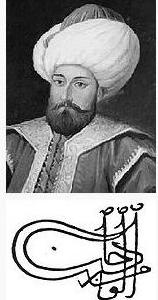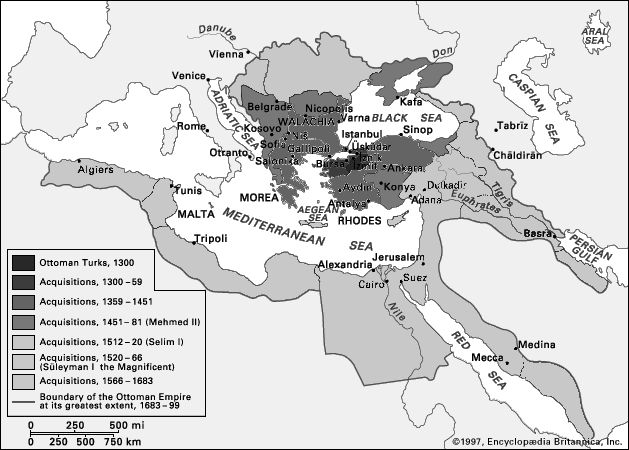OLLI Workshop: History of the Middle East
Leader: Theo Pavlidis (t.pavlidis@ieee.org)
Handout No. 1 - February 6, 2012
Birth and Rise of the Ottoman Empire (Chapter 13 and 14)
|
The Ottoman Turks became the major state in the Middle East region (and beyond) and their empire lasted until the 20th century. They started humbly (circa 1299) as a Turkish principality. Iin 1326 they captured Bursa from the Byzantines and made it the capital of their state, an event that Gibbon considers as the founding of the Ottoman empire. A few years later they crossed into Europe and by 1400 they controlled most of the Balkans and Asia Minor. The picture on the right is of the first Ottoman sultan Murad I and underneath it is his official signature (Tuğra). Notice that he has European rather than Asiatic features. [Adapted from the Wikipedia article on Murad I] The map below is that of the Ottoman Empire at its Peak (circa 1690): The darker the color, the older the possession. Almost black marks the original state before the Byzantines hired Ottoman mercenaries and let them into Europe. Dark gray marks possessions at the end of Mehmed's II reign. [Adapted from Encyclopedia Britannica] |
 |

